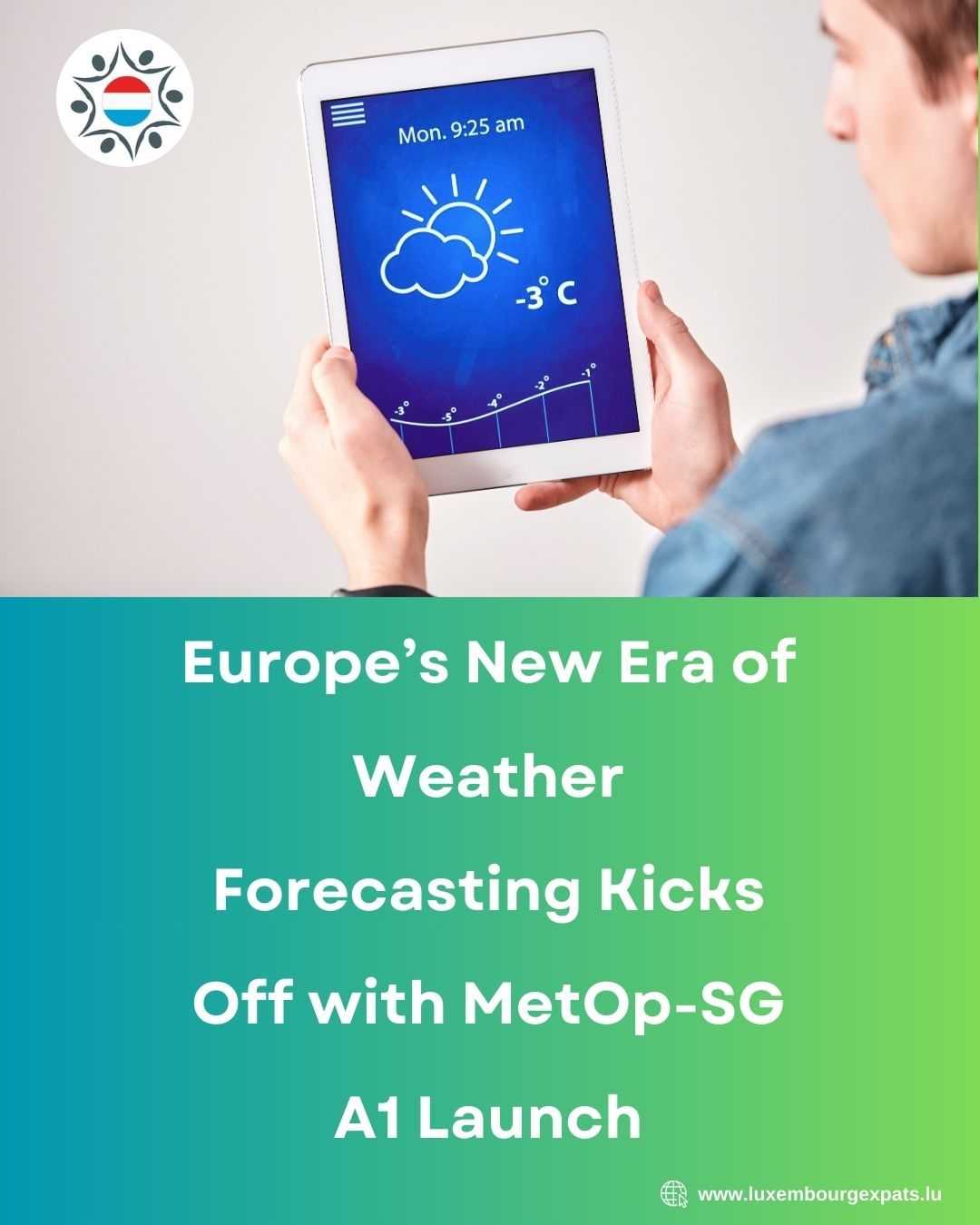Europe’s New Era of Weather Forecasting Kicks Off with MetOp-SG A1 Launch
LuxembourgPosted on 15 August 2025 by TeamKOUROU, French Guiana – Europe has ushered in a pivotal advancement in meteorological monitoring with the successful launch of MetOp-SG A1, the first of the next-generation polar-orbiting satellites, aboard an Ariane 6 rocket from Europe’s spaceport.
Launching Enhanced Forecast Accuracy
Built by Airbus for the European Space Agency (ESA) and EUMETSAT, MetOp-SG A1 is set to transform weather prediction capabilities. Recovering communication post-launch, the satellite has entered its commissioning phase—marking the first step in a mission that will strengthen forecasting precision for decades.
Equipped with cutting-edge instruments, MetOp-SG A1 carries:
- IASI-NG (Infrared Atmospheric Sounding Interferometer – Next Generation)
- METimage (Visible & Infrared Imager)
- Microwave Sounder
- Radio Occultation Sounder
- 3MI (Multi-viewing, Multi-channel, Multi-polarisation Imager for aerosol and cloud monitoring)
- The Copernicus Sentinel-5 instrument for high-resolution atmospheric composition data—including trace gases and air quality.
Future-Proofing Weather and Climate Data
This mission begins the deployment of six satellites—three A-type and three complementary B-type—designed to maintain and enhance MetOp’s observational continuity through the mid-2040s. MetOp-SG satellites will provide real-time data critical to both short-term weather models (12 hours to 10 days ahead) and climate monitoring, especially over under-observed regions like the poles.
EUMETSAT Director-General Philip Evans emphasized the importance: extreme weather events in Europe—from heatwaves to storms—have inflicted massive costs and loss of life. The enhanced data from MetOp-SG A1 will bolster early warning systems that can save lives, protect infrastructure, and aid sectors like agriculture, energy, aviation, and marine navigation.
A Symbol of European Collaboration
The MetOp-SG program showcases Europe-wide scientific and industrial cooperation. Key partners include ESA, EUMETSAT, Copernicus, national space agencies (CNES, DLR, UK Space Agency), and an Airbus-led consortium spanning 17 countries. The satellite’s operational lifespan of 7.5 years ensures three overlapping pairs deliver continuous coverage until at least the mid-2040s.
Read More:Europe's New Era of Weather Forecasting Begins With Successf
Join the Luxembourg Expats Community luxembourgexpats.lu
I am your contact
Team
Chat









